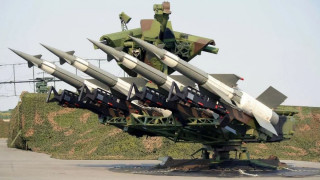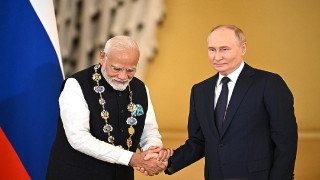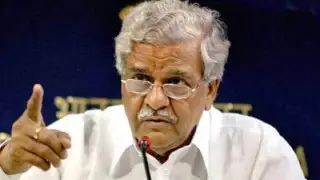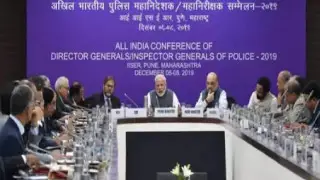
China Pakistan (Social Media)
National News: In a significant revelation on Friday, Deputy Army Chief Lieutenant General Rahul R. Singh revealed that although India was visibly engaged with Pakistan during Operation Sindoor, the actual conflict was being directed from behind the scenes by China and Turkey. He asserted that Pakistan did not possess the strength to confront India independently, and it was China’s extensive support—including real-time intelligence, advanced weaponry, and tactical coordination—that kept Pakistan in the fight.
Lt. Gen. Singh stated that more than 81% of Pakistan’s military hardware is sourced directly from China. During Operation Sindoor, Beijing supplied Islamabad with real-time battlefield data and advanced military support, effectively turning the confrontation into a "live testing ground" for Chinese military technology. Turkey also joined in, extending strategic backing to Pakistan.
He further emphasized that without China’s backing, Pakistan would have surrendered within the first day of the operation.
Taking decisive action against embedded threats, the Indian Army announced a complete ban on Chinese components across all military systems. Major General C.S. Mann from the Army Design Bureau confirmed that Chinese-made parts—especially in drones—will no longer be permitted. This move highlights how technical infiltration has become as serious a concern as cross-border aggression.
China is expanding its reach along India’s eastern flank by deepening influence in Bangladesh. Ever since Mohammad Yunus assumed political prominence, China has been pushing to establish a PLA presence in the region. Alarmingly, Bangladesh is reportedly considering handing over an abandoned airbase near the strategic Siliguri Corridor to China—posing a major strategic threat to India.
India shares a 3,488 km-long unsettled border with China, demarcated by the Line of Actual Control (LAC). This disputed frontier remains a hotspot for frequent confrontations. Incidents like Galwan and Doklam reflect China’s persistent territorial provocations. Furthermore, Beijing’s aggressive claims over Arunachal Pradesh and Bhutanese territory underscore its broader strategy to destabilize regional balance and assert dominance across South Asia.
Recent intelligence reports confirm that a Chinese research vessel, "Xiang Yang Hong 03", has been spotted near Indian naval missile testing zones. These maneuvers suggest China is actively monitoring India’s maritime operations, attempting to exert pressure in India’s own backyard.
India has no territorial claim in the South China Sea, yet China’s growing military dominance has forced New Delhi to join the Indo-Pacific strategic alliance. China has built permanent military bases in the region and is aggressively asserting control, jeopardizing global shipping lanes and India’s economic interests.
India’s trade deficit with China has surged to a staggering $99 billion in FY25, highlighting a growing imbalance that poses significant challenges to domestic industries and economic sovereignty. While Indian exports to China are declining, Chinese imports continue to flood the market. This widening imbalance is severely impacting India’s MSME sector, the backbone of the domestic economy, by undercutting local manufacturers and stifling indigenous production.
Beyond borders, China is also waging an information war. According to the U.S. State Department, Beijing spends billions on spreading false narratives and misinformation to tarnish India’s global image. Topics such as Manipur violence, G20 controversies, and Khalistan-related propaganda have been manipulated by Chinese media to create internal discord.
With the Dalai Lama turning 90 this year, Beijing is exerting pressure to influence the succession process—a clear breach of India’s religious freedom and a direct challenge to the autonomy of the Tibetan Buddhist community living in exile in India. New Delhi has firmly rejected such interference.
While Pakistan remains militarily inferior, India’s real challenge lies in China’s multidimensional aggression—military, technological, economic, and psychological. From proxy wars and territorial incursions to economic infiltration and cyber propaganda, China is attacking India on all fronts.
The real test for India in the coming decade is not on the battlefield with Pakistan, but in confronting and outmaneuvering an expansionist and hostile China.













Copyright © 2025 Top Indian News
